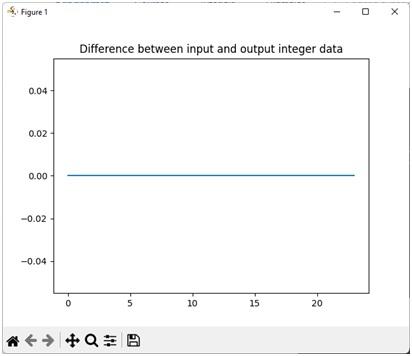QPSK Mapper and Demapper Python Code
Advertisement
This document provides Python code for QPSK mapping and QPSK demapping, which are fundamental processes in digital communication systems.
Introduction:
QPSK, or Quadrature Phase Shift Keying, is a digital modulation technique used to increase data rate by transmitting two bits per symbol. This is achieved by mapping two binary digits onto a single RF carrier.
 QPSK mapper
QPSK mapper
The figure above illustrates the QPSK data constellation and the QPSK mapping process. The QPSK demapper performs the inverse operation of the QPSK mapper, recovering the original binary data.
QPSK Mapping and Demapping Python Script
The following Python code implements QPSK mapping and demapping, allowing you to map digital binary data to QPSK constellation points and vice versa.
import random
import numpy as np
import matplotlib.pyplot as plt
len1 = 48 # length of input data
mode = 2 # QPSK 2 bits per sub carrier
mapping_table = {
0: 0.7071 + 0.7071j,
1: -0.7071 + 0.7071j,
2: 0.7071 - 0.7071j,
3: -0.7071 - 0.7071j
}
dec_binary = {
0: '00',
1: '01',
2: '10',
3: '11'
}
# Binary random data generator (1s and 0s)
input_data = ""
for i in range(len1):
temp1 = str(random.randint(0, 1))
input_data += temp1
print("Mapper IN, Input Binary string :", input_data)
# Conversion of bits to dual bits and integer list
s1 = input_data
s2_user1 = []
chunks = [s1[i:i+mode] for i in range(0, len(s1), mode)]
for piece in chunks:
temp = int(piece, 2)
s2_user1.append(temp)
print("Input integer list :", s2_user1)
# QPSK mapping part
Q = np.zeros((24,), dtype=complex)
j = 0
for val in s2_user1:
Q[j] = mapping_table[val]
j += 1
print("QPSK mapper output complex list", Q)
# QPSK de-mapping part
Q1 = np.zeros((24,), dtype=int)
j = 0
for i in Q:
if i == 0.7071+0.7071j:
Q1[j] = 0
elif i == -0.7071+0.7071j:
Q1[j] = 1
elif i == 0.7071-0.7071j:
Q1[j] = 2
elif i == -0.7071-0.7071j:
Q1[j] = 3
else:
print("improper i value")
j += 1
print("De-mapper Output integer list:", Q1)
# Converting integer to bits
output_data = ""
j = 0
for val in Q1:
output_data += dec_binary[val]
j += 1
print("De-mapper OUT, Output Binary String:", output_data)
plt.plot(s2_user1-Q1)
plt.title("Difference between input and output integer data")
plt.show()
QPSK Mapper Python Output and Plots
The following showcases the outputs generated by the QPSK Python code at various stages. It illustrates the mapper’s binary input, corresponding integer list, the QPSK mapped output, the de-mapper’s integer output, and the final de-mapper’s binary output.

The plot below demonstrates the difference between the mapper’s input (integer array list) and the demapper’s output (integer array list). As the plot indicates, the output remains at zero, signifying that both inputs and outputs have matching values.

Advertisement
 RF
RF






